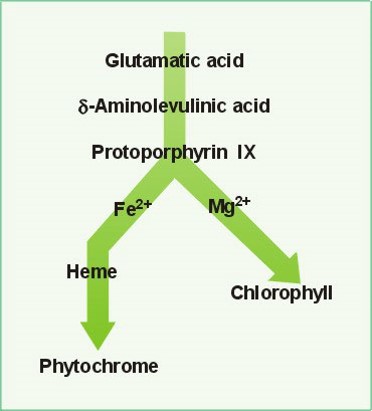Chapter 18: MOA Part 4 – Photosynthesis Inhibitors (PPO & Pigment Inhibitors)
18.3 Importance of PPO

We will start our discussion with the Cell Membrane Disruptors, Group 14, PPO Inhibitors. To begin it is important understand the vital role of PPO in a healthy plant. Protoporphyrinogen oxidase (PPO) is an enzyme in the chloroplast of the plant cell that oxidizes protoporphyrinogen to produce protoporphyrin IX. This product is significant because it is a precursor molecule for both chlorophyll (needed for photosynthesis) and heme (needed for electron transfer chains). The diagram here illustrates the biochemical pathway so you can see where PPO plays a critical role (formation of protoporphyrin IX).
Protoporphyrin is a very effective photosensitizing molecule. Normally, the concentrations of protoporphyrin in the cell are kept very low and it is channeled from its production site in the chloroplast to other locations in the cell where it is needed for heme biosynthesis. The next section will explain how the concentrations of protoporphyrin increase and accumulate throughout the cell in the presence of the herbicide inhibitors.